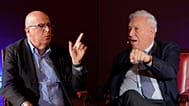Over the last few weeks, reports of the so-called “knock-out game” in the US Northeast have surfaced in various media, ranging from local community news websites in Brooklyn, New York , to a regional TV station , all the way to the Daily Mail, the world’s most visited news website .
The extent of the coverage would have you believe that American streets have become especially dangerous in a matter of days, and that a sneaky sucker punch is just a street corner away.
What we know
Reported “knockout game” assaults are said by such media outlets to follow the same pattern: a “gang” or group of attackers, always young adults, mostly males, target an individual and in an “unprovoked”, “senseless” and “cowardly” attack proceed to knock the victim down with a single punch.
With reported attacks – and real victims – in New York City, Saint Louis (Mass.), Philadelphia (PA), law enforcement agencies fear the “knock-out game” may spread like “wildfire”, with the unwitting help of the Internet.
“Everyone is very concerned about the Knockout Game which is happening nationally. People see it on YouTube and everyone starts to copy it, wanting to outdo each other” a NYC police investigator said to Vos Iz Neias news website. “[The alleged perpetrators] were copycatters. (…) Our job is to get the bad guys and protect the community.”
Racial components come into play in the “knockout game” stories; some attacks have occurred in predominantly Jewish neighbourhoods, and one suspect who allegedly attacked an Orthodox Jew has been charged with committing a hate crime.
Race is a factor for the alleged attackers as well, whether it is explicit (referring to as “Hispanic men” and running pictures of Asian or Black alleged assailants ) or implicit thanks to a certain choice of words. Newsweek writes that the word ‘thug’, used for instance on a front page of the New York Post about the game, is a demeaning word against “black men and boys.”
Just an urban myth?
Not all media have spoken of “knock-out game” in the same way: The New York Times expressed serious doubts as to the size of the phenomenon. “Police officials in several cities where such attacks have been reported said that the ‘game’ amounted to little more than an urban myth, and that the attacks in question might be nothing more than the sort of random assaults that have always occurred,” NYT journalist Cara Buckley reports. “Police officials cautioned that they had yet to see evidence of an organized game spreading among teenagers online, though they have been reluctant to rule out the possibility.”
Jamelle Bouie for The Daily Beast reports that, according to the FBI’s statistics, assaults with ‘hands and fists’ have increased 0.7 percent between 2011 and 2012. “The ‘knockout game’ may or may not be a new phenomenon, but with a few instances out of tens of thousands of assaults, it’s not a trend, and media outlets shouldn’t treat it as one,” Bouie writes.
Emma Roller, for Slate.com is more direct . While acknowledging that “the game definitely exists, and has been around for at least a couple of years,” she writes that “the idea that it’s reached epidemic levels, or that it’s only being played by young black people is a fallacy” supported by at best anecdotal evidences.
According to her, the “knockout game” freak-outs are another occurrence of the frequent “false trend story of black mob violence” popping up again on the news radar. She goes on to accuse various conservative and right-wing media personalities and outlets of fanning the flames without “hard data showing that it’s a trend”.
Narrative element of a moral panic
Doubts are one thing, but the media narratives about the “knock-out game” also hint at the latest resurgence of the concept of a “moral panic.”
Often misused, the term was defined in 1973 in sociologist Stan Cohen’s seminal book Folk Devils and Moral Panics, The creation of the Mods and Rockers (1). In this work, Cohen focussed on the media and society’s reactions to street fights in the early 1960’s between two subculture groups, the mods and the rockers.
While Cohen’s definition is long and complex, Roger Hopkins Burke put it in layman’s terms (emphasises’ euronews’) in the sequence below:
“Cohen [finds] the press to be guilty of exaggeration and distortion in their reporting of [skirmishes between mods and rockers]. The sense of outrage communicated by such misrepresentation […] set in motion a series of interrelated responses. First, there was* increased public concern about the issue*, to which the police responded by increasing their surveillance of the groups in question – mods and rockers. This resulted in more frequent arrests, which in turn appeared to confirm the validity of the original media reaction. Second, by emphasising the stylistic differences and antagonisms between the groups, the press reaction encouraged polarisation and further clashes between the groups ” (2)
Keeping in mind this explanation, a quick glance at some of the articles mentioned earlier will make each element appear clearly and suggest a moral panic is emerging from this story. For instance, the press’ exaggeration of the occurrences of games of “knockout,” the concerned communities of the perceived threats, the police forces beefing up their presence in the streets, arresting more people and thus confirming the existence of “copycat” attacks.
Emphasis on the race of the alleged victims and assailants also serves the implicit purpose of underlying the dualistic antagonisms between the groups, the “civilized society” against the “deviants”.
Chas Critcher, communication scholar at Swansea University, specialises in the concept of moral panic. He evaluates the role of the media thus: “The media are particularly important in the early (‘inventory’) stage of social reaction, producing ‘processed or coded images’ of deviance and the deviants, “ he explains (3). “The cause is not a conspiracy amongst journalists but the normal practice of newsmaking. The media focus most on those events and people disrupting the social order”.
Vague mental ‘coded images’ of “gangs” of “thugs” mentioned in the media become the folk devils of Cohen’s seminal book.
That being said, it is in no way a recent phenomenon; over the last 35 years, moral panic cases studied by scholars relate to “seven areas: AIDS, child abuse, drugs, immigration, media violence, street crime (including guns) and youth deviance in general,” Critcher writes .
Indeed, recent real life instances of moral panic include fears of links between Satanism and heavy metal/role-playing games/video games, paedophile scares, the disappearance of Madeleine McCann, etc.
With the “knockout game,” it seems that communication and criminology manuals will have another textbook example of a emerging moral panic.
Credit photo CC BY Flickr/marcfalardeau http://eurone.ws/1cqaEEK
Sources:
1)Cohen, Stan. Folk Devils and Moral Panics.London: MacGibbon and Kee. (1972)
2)Hopkins Burke, Roger. “An Introduction to Criminological Theory. 3rd edition”. Cullompton, Willan Publishing (2001)
3)Critcher, Chas. “Moral Panic Analysis: Past, Present and Future.” Sociology Compass 2/4 (2008) p. 1127-1144















